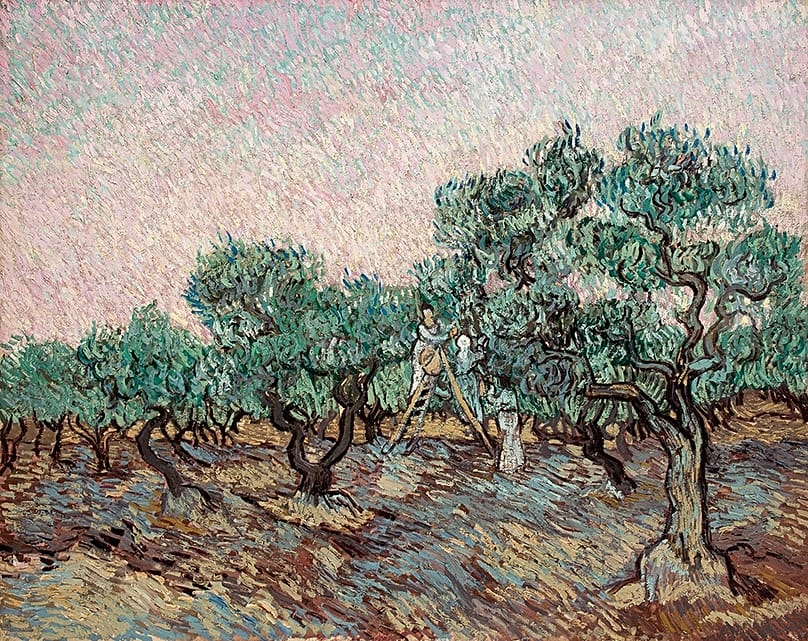A Jewish couple was forced to leave Vincent van Gogh’s 1889 'Olive Picking' behind when they fled Nazi Germany. The pair's heirs are now fighting for the painting's ownership.
The heirs of a Jewish couple who fled Germany in the 1930s are suing the Metropolitan Museum of Art in New York and a Greek art foundation over a van Gogh oil painting they say was looted by the Nazis.
The Met purchased Vincent van Gogh’s 1889 'Olive Picking' for $125,000 (€108,000) in 1956 and sold it to a Greek magnate in 1972.
The lawsuit, which was first reported by the New York Times, argues the American museum “knew or should have known that the painting had probably been looted by Nazis.” The heirs behind the claim are now seeking the return of the painting and damages.
The plaintiffs are descendants of Hedwig and Frederick Stern, a German couple from Munich who first bought 'Olive Picking' in 1935.
The Sterns were forced to flee Germany for the United States with their six children a year later, amid rising Nazi persecution against Jewish people.
But the suit alleges they were prevented from taking the artwork with them. Instead, Nazi authorities declared it “German cultural property.”
It was sold in 1938 on the Sterns’ behalf but the Nazis confiscated the profits, according to the suit filed on Monday in a federal district court in Manhattan.
The painting arrived in the United States after the end of World War II, where it was purchased by Vincent Astor, a prominent businessman and philanthropist, before being traded to the Met.
The New York institution sold it to Greek magnate Basil Goulandris and his wife Elise. The painting is currently on display in an Athens museum operated by the couple’s namesake foundation. It is worth more than $75,000 (€64.800), according to court documents.
On the foundation’s website, the section dedicated to the canvas’ provenance eludes its ownership between 1924 and 1948, with no mention of the Sterns.
The suit argues the 1972 transaction was overseen by Theodore Rousseau Jr., the Met’s curator of European paintings.
“Critically, Rousseau was also one of the world’s foremost experts on Nazi art looting,” the suit says. “Rousseau took no action to assure himself or the Met of anything about the Painting’s transfers from or within Germany during the war.”
The plaintiffs had previously filed a similar lawsuit in a California court in 2022 but it was dismissed in 2024 after the court said it did not have jurisdiction over the matter.
“In the decades since the end of World War II, this Nazi-looted painting has been repeatedly and secretly trafficked, purchased and sold in and through New York,” lawyers for the heirs said in the filing.
The Met has repeatedly said it did not know of the artwork’s affiliation with the Stern family.
“In response to the systematic, widespread looting by the Nazi regime, the provenance of works that changed hands in German-occupied Europe during the Nazi era has long been an area of particular focus for The Met,” the museum says on its website.
The Basile & Elise Goulandris Foundation has also rejected allegations that it had concealed part of the painting’s history, saying the suit attemps to “smear” it.












